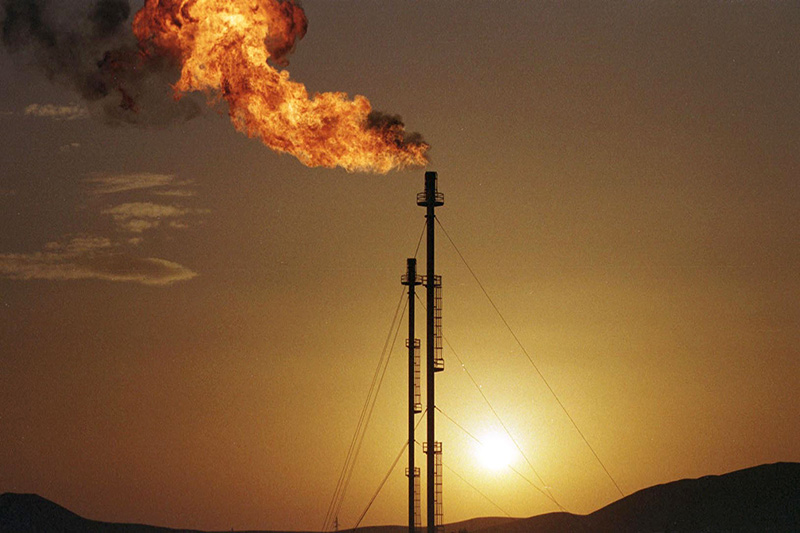Investing.com - Natural gas futures extended losses to hit a two-week low on Tuesday, after a report from the U.S. Energy Information Administration showed that natural gas supplies rose broadly in line with market expectations in the week ended October 11.
On the New York Mercantile Exchange, natural gas futures for delivery in November traded at USD3.630 per million British thermal units during U.S. morning trade, down 1.1%.
Prices traded at USD3.632 prior to the release of the U.S. Energy Information Administration report.
Nymex gas prices fell to a session low of USD3.619 per million British thermal units, the weakest level since October 7.
The November contract settled 2.55% lower at USD3.668 per million British thermal units on Monday.
Nymex gas futures were likely to find support at USD3.521 per million British thermal units, the low from October 7 and resistance at USD3.817, the high from October 21.
The U.S. Energy Information Administration said in its weekly report that natural gas storage in the U.S. in the week ended October 11 rose by 77 billion cubic feet, just below forecasts for an increase of 80 billion cubic feet.
Inventories increased by 54 billion cubic feet in the same week a year earlier, while the five-year average change for the week is a build of 75 billion cubic feet.
Total U.S. natural gas storage stood at 3.654 trillion cubic feet as of October 11.
Stocks were 115 billion cubic feet less than last year at this time and 57 billion cubic feet above the five-year average of 3.597 trillion cubic feet for this time of year.
The EIA’s data-release schedule will return to normal later in the week, with the publication of October 18 storage data due on Thursday.
Meanwhile, market participants continued to focus on weather forecasts to gauge the strength of demand for the fuel.
Near-term weather forecasts pointed to colder-than-normal temperatures across most parts of the eastern half of the U.S.
However, extended weather forecasting models called for above-average weather across most of the nation throughout most of November.
Natural gas prices have closely tracked weather forecasts in recent weeks, as traders try to gauge the impact of shifting outlooks on early-winter heating demand.
The U.S. heating season runs from November through March, and is considered the peak demand period for gas consumption.
Elsewhere on the NYMEX, light sweet crude oil futures for delivery in December inched up 0.35% to trade at USD100.04 a barrel, while heating oil for November delivery added 0.85% to trade at USD3.036 per gallon.
On the New York Mercantile Exchange, natural gas futures for delivery in November traded at USD3.630 per million British thermal units during U.S. morning trade, down 1.1%.
Prices traded at USD3.632 prior to the release of the U.S. Energy Information Administration report.
Nymex gas prices fell to a session low of USD3.619 per million British thermal units, the weakest level since October 7.
The November contract settled 2.55% lower at USD3.668 per million British thermal units on Monday.
Nymex gas futures were likely to find support at USD3.521 per million British thermal units, the low from October 7 and resistance at USD3.817, the high from October 21.
The U.S. Energy Information Administration said in its weekly report that natural gas storage in the U.S. in the week ended October 11 rose by 77 billion cubic feet, just below forecasts for an increase of 80 billion cubic feet.
Inventories increased by 54 billion cubic feet in the same week a year earlier, while the five-year average change for the week is a build of 75 billion cubic feet.
Total U.S. natural gas storage stood at 3.654 trillion cubic feet as of October 11.
Stocks were 115 billion cubic feet less than last year at this time and 57 billion cubic feet above the five-year average of 3.597 trillion cubic feet for this time of year.
The EIA’s data-release schedule will return to normal later in the week, with the publication of October 18 storage data due on Thursday.
Meanwhile, market participants continued to focus on weather forecasts to gauge the strength of demand for the fuel.
Near-term weather forecasts pointed to colder-than-normal temperatures across most parts of the eastern half of the U.S.
However, extended weather forecasting models called for above-average weather across most of the nation throughout most of November.
Natural gas prices have closely tracked weather forecasts in recent weeks, as traders try to gauge the impact of shifting outlooks on early-winter heating demand.
The U.S. heating season runs from November through March, and is considered the peak demand period for gas consumption.
Elsewhere on the NYMEX, light sweet crude oil futures for delivery in December inched up 0.35% to trade at USD100.04 a barrel, while heating oil for November delivery added 0.85% to trade at USD3.036 per gallon.
